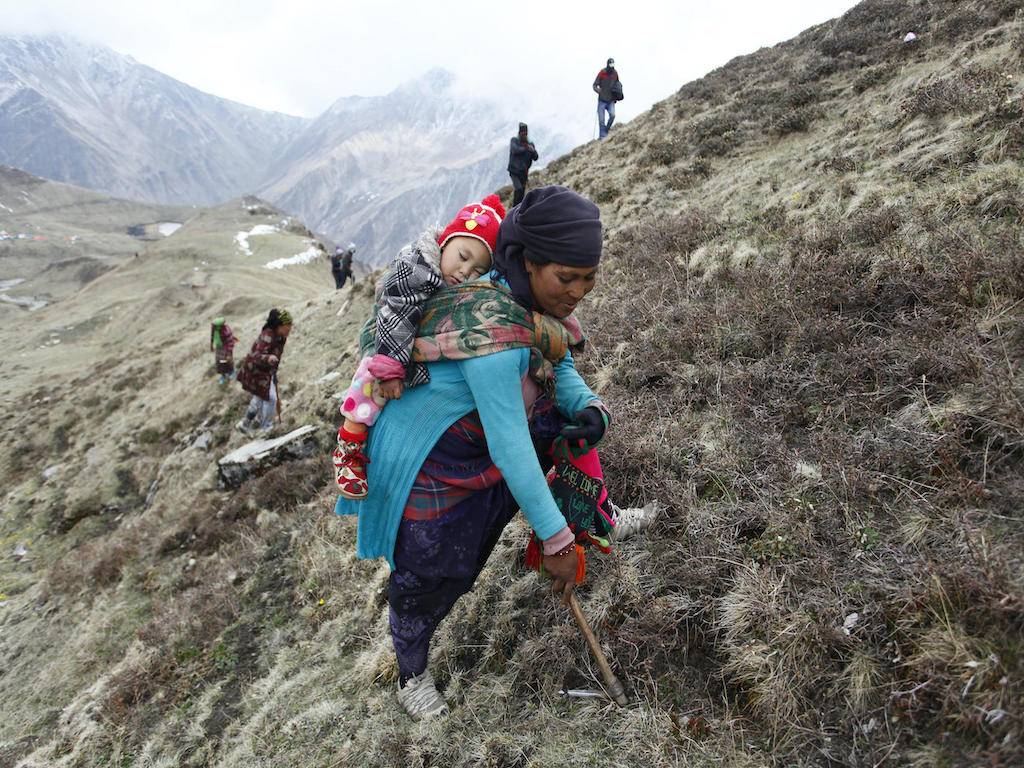
Yarsagumba is a rare caterpillar-fungus fusion that develops when parasitic mushroom spores (Ophiocordyceps sinensis) invade and mummify a soil-dwelling ghost moth larva. Later, a spindly fungus sprouts from the head of the dead caterpillar host. The fungus shoots two to six centimeters above the surface, serving as a tiny finger-shaped flag for harvesters to spot.
This strange hybrid is the most valuable biological resource on the planet. Yarsagumba thrives in Nepal, India, and Bhutan, at altitudes ranging from 3000 to 5000 meters, as well as on the Tibetan Plateau, which is known as the "roof of the earth." It's known in Tibet as "Yartsa gunbu," which means "summer grass winter worm."
The caterpillar fungus has been used in Traditional Chinese Medicine for over 2000 years, and is known for its ability to improve stamina and fertility, enhance the lungs and kidneys, treat cancer and asthma, and, perhaps most notably, heal impotence and raise libido, earning it the moniker "Himalayan Viagra." The “faultless treasure,” according to a 15th century Tibetan medical book, “removes prana diseases, cures bile diseases, and does not lift the phlegm: a wonderful medicine.” It boosts sperm production in particular.”
After the 1993 World Championships in Athletics, when the trainer of a group of dominant Chinese female distance runners, who would go on to break world records, revealed that his athletes had been fed a soup of yarsagumba and turtle blood, demand for the tonic reportedly skyrocketed. “Among the rich and influential in China,” writes Daniel Winkler, an ecologist who has done thorough research on the fungus, “yarsagumba has come to rival French champagne as a status symbol at dinner parties or as a prestigious gift,” according to one of his papers.
Harvesters in Nepal earn around $18 per gram on the local market (a single dried specimen weighs less than half a gram). However, when yarsagumba is sold in China, the most important foreign trading destination, it can fetch up to $100 per gram. This makes it more costly than gold gram for gram. The market cap has been estimated to be between $5 and $11 billion globally.
In Nepal, there is a serious lack of clear yarsagumba policy and investment in sustainability. This is perhaps unsurprising, given that the nation is still drafting its constitution after emerging from a decade-long civil war and undergoing a turbulent transition from constitutional monarchy to republic. However, tackling these environmental issues requires preserving a wealth that benefits some of the country's most vulnerable citizens. That is unquestionably a cause worth fighting for.












